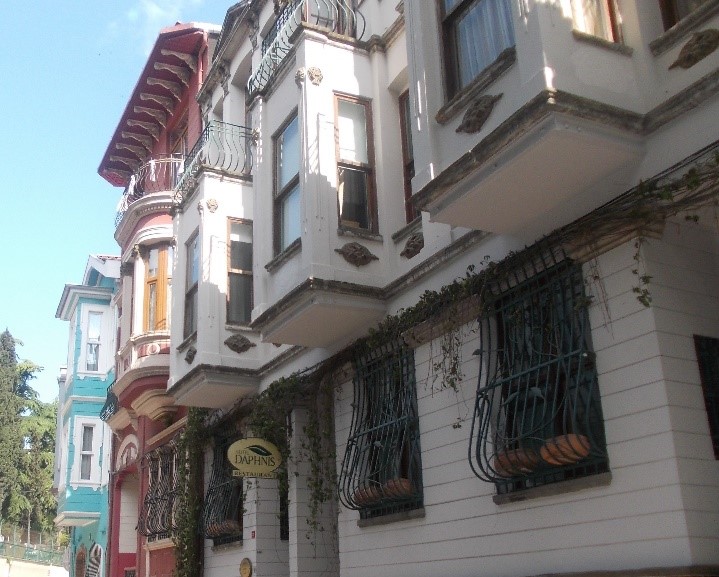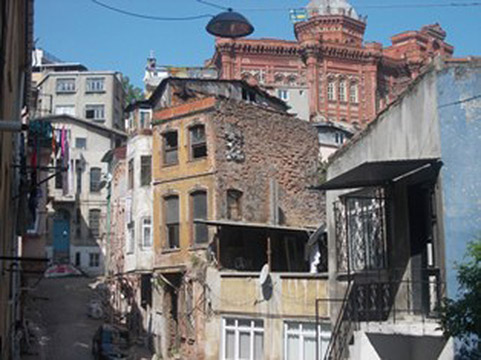Phanariots
In one of the world’s most captivating locations, within the historic core of Istanbul, along the shores of the Golden Horn, lies the city quarter known as Phanar in Greek and Fener in Turkish. Following the Ottoman conquest of Constantinople, this district became home to the Greek community and was designated as the seat of the Ecumenical Patriarchate – the foremost authority, the first among equals, among Orthodox Christians worldwide.
For centuries thereafter, the residents of this city quarter, the Phanariots, represented the intellectual and economic elite of both the Greek people and the entire Ottoman Empire. Exceptionally educated, fluent in multiple European languages, and skilled in administration, diplomacy, and finance, the Phanariots were prime candidates for influential positions within the Ottoman state apparatus and the Orthodox Church. Members of these prominent families were often chosen to become Ecumenical Patriarchs, or appointed to pivotal diplomatic roles essential for maintaining relations with Western powers – ties that were crucial to the survival of the Ottoman Empire. In recognition of their service, sultans would grant the most accomplished among them trade monopolies and governance of major provinces in present-day Romania and Moldova, enabling them to amass extraordinary wealth.

Istanbul 2013, Phanar – Fener quarter
The leading Phanariot families often sought to bolster their esteemed social standing by asserting – albeit not always with solid evidence – a lineage tracing back to Byzantine noble families and, even further, to the Roman Empire.
Nobility, wealth, education, and political power – what a combination! The Phanariots were a proud, often even arrogant, elite whose influence peaked in the 18th century but later waned under the indirect impact of the Greek War of Independence, despite their loyalty to the Empire and refusal to engage in this conflict.
The Glorious History of the Great School of the Nation
Education, a cornerstone of Phanariot success, held immense significance for these families. Shortly after the fall of Constantinople in 1453, the young Sultan Mehmed the Conqueror sought collaboration with the faction of Orthodox clergy that had steadfastly rejected a proposed union with the Roman Catholic Church in the preceding tumultuous years. As a result, Gennadios Scholarios, the most adamant opponent of the union, was appointed Patriarch, while his mentor, Matheos Kamariotis, took on the task of revitalizing Greek education under the new circumstances. As early as 1454, Kamariotis founded the institution revered by Greeks as the Great School of the Nation, which for centuries educated the intellectual elite of both the Greek people and the Ottoman Empire. For the Greek community, this institution was nothing less than both their Oxford and Cambridge.
By the late 19th century, as the long-standing Empire faced a terminal crisis, prominent Phanariot families donated funds to construct a new building for their Great School of the Nation. The most generous benefactor was the wealthy banker and philanthropist Georgios Zariphis, a close friend and financial advisor to Sultan Abdul Hamid II. In a classic Phanariot role, Zariphis endeavoured to manage the Empire’s staggering national debt.
The school was given a commanding location in Phanar, atop a hill. To match the ambitions of its patrons, the chosen architect, Ottoman-Greek Konstantinos Dimadis, designed a building whose grandiose style underscored its importance and the high expectations of those who commissioned it.

Istanbul 2013, the Great School of the Nation
Constructed between 1881 and 1883, the magnificent school building continues to dominate the Golden Horn skyline to this day, overshadowing even the Ecumenical Patriarchate and all other structures in Phanar. Its façade, adorned with intricate stonework details, was crafted from vibrant red bricks personally imported from France by banker Zariphis. The building is distinguished by its towering ceilings, an elegant entry staircase, and an imposing entrance gate nearly five meters high. At its pinnacle rises an exaggerated dome, which houses an observatory complete with an antique telescope still in place today. Local jokesters nicknamed the school the “Red Castle,” ironically highlighting its resemblance to medieval fortresses and its ostentation – a stark contrast to the hopelessly indebted Empire it was built within.
To be fair to the architect, Konstantinos Dimadis, he was simply following the trends of his time. During this era, education for national elites was highly valued, and no expense was spared in constructing grand educational institutions. In Victorian England, a global leader in science and education, a similar trend of building monumental schools in the Gothic Revival style (alternatively called Victorian Gothic or Neo-Gothic) was flourishing. A notable architect Arthur Blomfield designed iconic structures such as Selwyn College, Cambridge; the Royal College of Music, London; and Keble College, Oxford. These designs may have served as inspiration for Dimadis and Zariphis. Clearly, the Phanariot families, immensely proud of their school, aspired for it to stand alongside the finest English colleges and other leading European institutions of the time.
The School Today
The political reality, however, grew increasingly bleak. Greeks and Turks were locked in a cycle of wars and expulsions, culminating in the 1923 population exchange agreement, which forced Orthodox Greeks to leave the newly formed Turkish Republic. Although the Phanariots were typically exempt from such measures due to their privileged status, it was clear that the golden age of the Phanariot Greeks had irrevocably ended.
In the new republican, post-sultan era, the once-significant contributions of the Phanariots to state administration and diplomacy were nearly forgotten. Whenever relations with Greece soured, newly arrived residents of Istanbul, hailing from distant regions, would often channel their anger toward the Phanariot Greeks, sometimes resorting to violence and even setting their shops ablaze.
Thus, after thousands of years of continuous presence in this region, and five hundred years spent as a privileged class under Ottoman rule, the majority of the Phanariot Greeks were ultimately compelled to abandon their city and seek a new life in Greece.

Phanar with the school atop the hill
Today, Phanar resembles a ghost town, with more abandoned houses than inhabited ones. Walking through Phanar is an emotional experience. Every decaying façade, every sagging balcony, every broken gate tells a sad story of its own, yet all of this is overshadowed by an indescribable sense of deep, all-encompassing melancholy.

Amid the decay of its surroundings, the hilltop school stands as a beacon of enduring splendour. The teachers, mostly ethnic Greeks, follow a curriculum adapted to the needs of high schools for national minorities. It is the most prestigious Greek school in Turkey, and though it has evolved from being an all-boys institution to welcoming girls alongside their male peers, the number of students remains dishearteningly small. The observatory, perched in a dome atop the building, still serves the students. From this vantage point, breath-taking views of the ancient city stretch out before them – a perfect opportunity to make use of the vintage telescope. A slight downward tilt of the lens reveals the empty, half-deserted streets of Phanar where they may catch a glimpse of the last true Phanariots – figures of unwavering pride, untouched by time’s relentless tide since the days of Mehmed, …or Justinian, …or even Constantine: the high-ranking clergy of the Ecumenical Patriarchate.
Darko Veselinović



